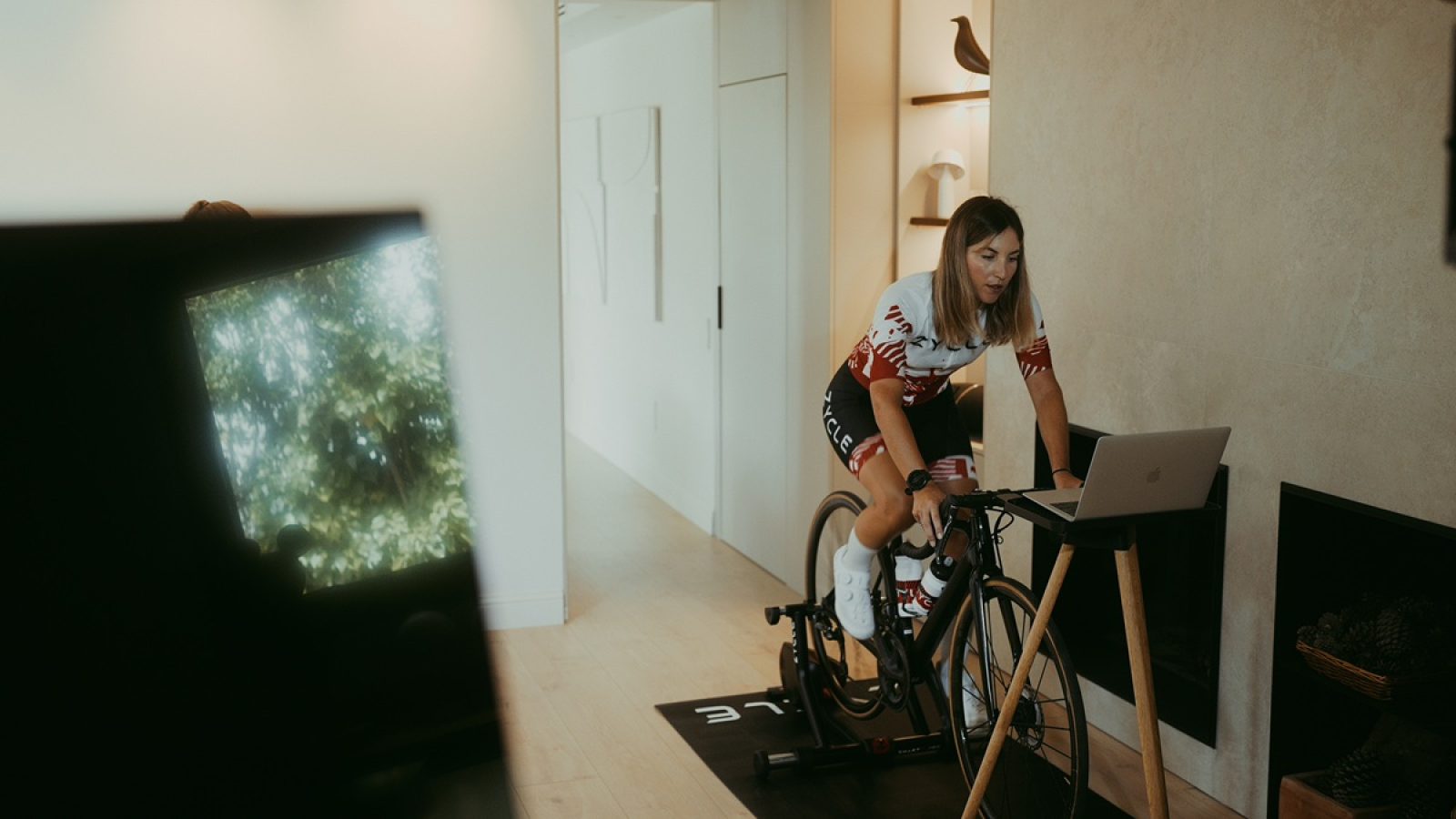Breathing correctly is one of the most underrated skills in cycling, both on the road and indoors. The way oxygen is managed during exercise can make the difference between maintaining a steady pace or exhausting yourself halfway up a hill. Mastering breathing in cycling not only helps improve endurance, but also prevents physical discomfort and optimizes recovery. In this article, we explain why chest pain occurs after cycling, how to improve breathing in cycling through practical techniques, the role of diaphragmatic breathing, and how you can increase your lung capacity to perform better on the bike. Keep reading!
Why do I feel chest pain after cycling?
Chest pain after cycling is a relatively common complaint, especially among cyclists who are resuming training or engaging in intense exercise. In most cases, it is not serious, but it is important to understand why it occurs. During pedaling, the respiratory muscles work harder to supply oxygen to the tissues. If you don’t breathe efficiently, carbon dioxide builds up, causing a feeling of pressure or burning in the chest. It can also be caused by tension in the diaphragm, poor posture, overexertion, or simply a lack of breathing practice.
In other cases, the pain is caused by the cooling of the inhaled air, especially on outdoor routes in low temperatures, or by riding in a position that is too hunched over, which limits the expansion of the chest. However, if the pain persists and is accompanied by dizziness or severe shortness of breath, it is important to see a doctor, as it may also be related to cardiovascular or respiratory problems. Of course, in less severe cases, improving breathing technique not only helps to avoid these discomforts, but also increases the body’s efficiency when pedaling, allowing you to maintain high speeds for longer.
How to improve breathing while cycling
To improve breathing while cycling, it is not enough to simply inhale more air; it is about doing so consciously, rhythmically, and with control. The following breathing techniques for cyclists are simple but very effective in optimizing performance and reducing muscle fatigue.
Control your breathing with your pedaling rhythm
One of the most effective strategies is to synchronize your breathing with your cadence. During moderate exertion, you can use a pattern of inhaling for two pedal strokes and exhaling for two. At higher intensities, the rhythm can be reduced to 1:1, maintaining coordination between movement and breathing. This method helps keep oxygen flowing steadily, preventing hyperventilation or shallow breathing, which is very common in situations of physical or mental stress.
Breathe in through your nose and exhale through your mouth, or vice versa?
In low- or medium-intensity workouts, breathing through the nose allows the air to be filtered, warmed, and moistened before it reaches the lungs. Exhaling through the mouth, on the other hand, facilitates the elimination of accumulated carbon dioxide. However, in high-intensity sessions, this technique can be adapted by alternating nasal and oral breathing so as not to limit oxygen intake. The important thing is to avoid rapid, shallow breathing, which increases tension in the chest and reduces lung efficiency.
Maintain an open and relaxed posture
Your position on the bike directly influences your breathing. If your shoulders are hunched or your torso is too inclined, your diaphragm cannot move freely, which limits the expansion of your lungs. Therefore, it is recommended to keep your shoulders relaxed, your chest open, and your back stable. If you use an indoor cycling bike, adjusting the height of the handlebars and saddle correctly also helps you breathe more deeply and comfortably.
Breathing exercises for cyclists off the bike
Breathing exercises for cyclists outside of training are a powerful tool for strengthening the respiratory muscles and increasing lung capacity. Some of the most recommended are:
- Controlled breathing with timing: inhale for 4 seconds, hold for 2, and exhale for 6. This exercise trains control and stability of the breathing rhythm.
- Chest expansion exercise: with your hands on your ribs, inhale deeply, feeling them open out to the sides.
- Complete emptying technique: exhale completely until your lungs are empty, allowing for a deeper inhalation in the next cycle.
Performing these exercises daily, even at rest, improves oxygenation and exercise tolerance during road or roller sessions.
What is diaphragmatic breathing in cycling?

Diaphragmatic breathing is the basis of good breathing technique in cycling. It involves using the diaphragm, a muscle located below the lungs, to expand the abdominal cavity instead of the chest. Instead of raising your shoulders when you inhale, you should feel your abdomen rise slightly as you take in air and fall as you exhale. This technique improves lung efficiency, reduces muscle tension, and promotes a steady flow of oxygen. What’s more, it’s easy to practice:
- Lying down or sitting, place one hand on your chest and the other on your abdomen.
- Breathe in slowly through your nose, trying to move only your hand on your abdomen.
- Exhale through your mouth, controlling the flow of air.
Over time, this type of breathing becomes automatic, even during exertion, allowing you to maintain a steady pace and reduce feelings of fatigue. In indoor cycling, applying diaphragmatic breathing during training improves energy efficiency and recovery capacity between intervals, allowing the body to make better use of each breath.
How to increase lung capacity
Lung capacity is the maximum volume of air a person can inhale and exhale. In cycling, having a high lung capacity means having more oxygen to feed the muscles and delay the onset of fatigue. To increase lung capacity in cycling, it is recommended to combine breathing exercises with resistance training and sessions that work on VO2 max, i.e., the maximum amount of oxygen the body can use during exercise. In indoor cycling training, interval training (HIIT) and controlled intensity series help to progressively improve this capacity. When practiced together with proper breathing technique and specific diaphragm exercises, the results are multiplied. You can find detailed information in the article on VO2 max in indoor cycling.


 Cart is empty
Cart is empty 


